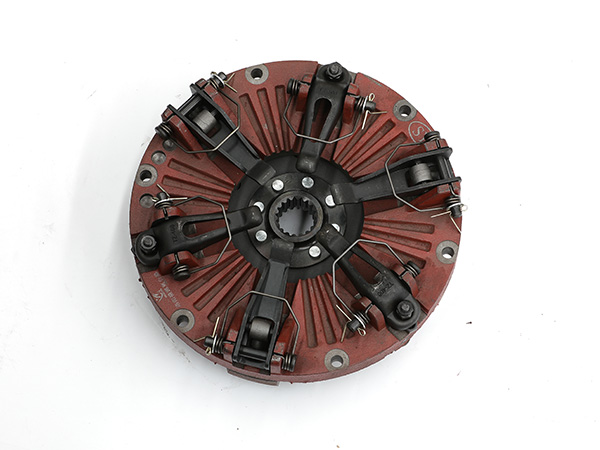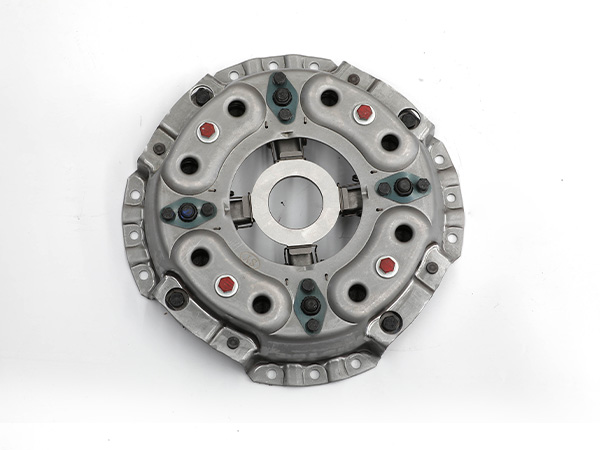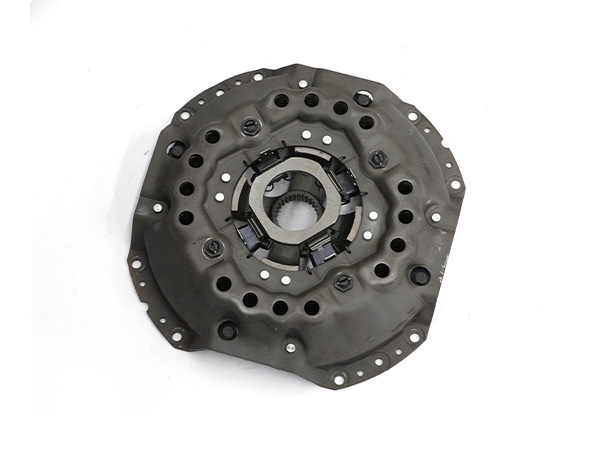With the increase in the number of times of use or improper use of the tractor clutch, the friction plates and transmission mechanism of the clutch will inevitably wear out, causing the clutch to slip, incomplete separation, and shaking during work, affecting the normal use of the vehicle. Therefore, timely inspection and adjustment of the clutch in use is essential. The following introduces the inspection and adjustment techniques of clutches used on several common models.
Adjustment of the clutch of Benno 350, 480 tractor
Benno 350, 480 tractor clutches are single acting clutches. In order to ensure reliable transmission of power, the active part must be pressed against the driven part so that the clutch does not slip. There should be a gap of 2.5 ±0.5 mm between the release bearing and the end faces of the three release levers. When the clutch is released, a little force is applied to the clutch pedal to eliminate this gap. The pedal stroke is called “free stroke”, which is converted to the separation The rocker arm is about 5 to 8 mm.
From this point on, continue to exert force on the clutch pedal, so that the separation rocker arm continues to swing forward until it hits the limit screw. 35mm. In the process of use, due to the wear of the driven plate, the pressure plate moves forward, and the free stroke is gradually reduced accordingly. Therefore, it must be checked and adjusted regularly. The methods are as follows:
(1) Adjustment of free stroke. It can be solved by turning the adjusting fork to shorten or lengthen the push rod, and the adjustment of the working stroke can be solved by screwing in or out the limit screw. After the adjustment is completed, the nuts on the push rod and limit screw should be tightened.
(2) Adjustment when the clutch is not completely disengaged. First adjust the working stroke to the maximum value, if it is invalid, open the peep window on the right side of the rear axle housing, first loosen the lock nut and tighten the three adjusting nuts at the same time, the rotation angles must be equal, and the operation of the separation clutch should be used. The test confirms whether the adjustment is effective. After the adjustment is completed, tighten the lock nut.
(3) Adjustment when the clutch slips. When the clutch slips, first check whether the free stroke is within the specified range. If the free stroke disappears or the 3 release levers have been compressed, the free stroke must be adjusted to the specified range. If the free stroke is within the specified range and the clutch slips, the three adjusting nuts must be adjusted, and the same rotation angle must be rotated outwards. After adjustment, tighten the nut again.

Adjustment of clutch of SH-500 tractor
The SH-500/504/650/654 tractor clutch is a single-plate, dry-type, double-acting clutch. The adjustment method is as follows:
(1) Adjustment of the free stroke of the clutch pedal. Remove the pin on the control rod, rotate the connecting fork, change the length of the rod, and adjust the free stroke of the clutch pedal to 25-35 mm.
(2) Adjustment of the main clutch release stroke. Loosen the locking nut on the main pressure plate, and turn the adjusting screw, so that the gap between the adjusting screw on the main pressure plate and the three lugs of the auxiliary friction plate pressure plate is 1. 8 mm.
(3) Another adjustment method for the separation stroke of the main clutch. Open the observation hole cover on the left side of the transmission, turn the clutch, align the adjusting screw on the main pressure plate and the three lugs of the auxiliary friction plate pressure plate with the observation hole, and then adjust one by one.
(4) Adjustment of the distance between the head of the three separation levers and the end face of the rear cylinder block of the diesel engine. Separate the diesel engine from the transmission, loosen the nut, and turn the adjusting screw on the release lever with a screwdriver, so that the distance between the heads of the three release levers and the end face of the rear cylinder block of the diesel engine is (158.5 ± 0.15) mm.

Adjustment of Dongfeng-504 Tractor Clutch
Dongfeng-504 tractor is a double-acting clutch, the adjustment method is as follows:
(1) Adjustment of the position of the clutch release lever. This adjustment is made when the clutch is installed. The adjustment method is: Loosen the lock nut on the release lever, and rotate the adjusting screw with an Allen wrench, so that the distance between the end face of the ball head of the release lever and the outer end face of the flywheel is 89-90 mm, and the adjustment values of the three release levers should be the same. Must not exceed 0.2 mm. After meeting the requirements, tighten the adjusting screw.
(2) Inspection and adjustment of the main clutch release stroke. During inspection, remove the clutch inspection port cover and measure with a feeler gauge. The clearance between the end faces of the three limit nuts and the main clutch pressure plate should be within the range of 2 to 2.05 mm. If it does not meet the requirements, it should be adjusted. The method is: loosen the lock nut, turn the adjustment nut, and tighten the lock nut after meeting the requirements.
(3) Adjustment of the free stroke of the clutch pedal. The adjustment method of the free stroke of the clutch pedal: Loosen the lock nut on the clutch lever, turn the lever, and change its length, so that the free stroke of the pedal is between 22 and 24 mm (equivalent to a clearance between the release lever and the release bearing of 2 mm).

JDT724, JDT7501 tractor
JDT724, JDT7501 tractors are normally engaged, single-plate, dry-type, double-acting clutches. The adjustment methods are as follows:
(1) Adjustment of the free stroke of the clutch pedal. Loosen the lock nut on the clutch lever, remove the connecting pin, and unscrew (or screw in) the adjusting fork to adjust the free stroke of the pedal to 20-30 mm. Finally reassemble the parts and tighten the lock nut. For models JDT7501, JDT754l and JDT8241, the free stroke of the pedal should be 30-50 mm.
(2) Adjustment of the clearance between the release lever and the end face of the release bearing. Remove the cotter pin on the adjusting nut from the front inspection hole on the left side of the clutch housing, and unscrew (or screw in) the adjusting nut so that the clearance between the end of the release lever and the end face of the release sleeve thrust bearing reaches (2.5 ± 0.5) mm, then insert a new cotter pin and lock it.
(3) Adjustment of the main clutch release stroke. When adjusting, screw the three support bolts until they stand against the end faces of the corresponding three stop pins, and then return the support bolts to 9 slots (you can hear 9 sounds), so that the end faces of the three stop pins The gap between it and the end faces of the three support bolts is (2.25±0.5)mm.
(4) Adjustment of the distance between the head of the three separation levers and the rear surface of the rear driven disc. When repairing, replacing parts and reinstalling the clutch assembly, the adjustment nut should be unscrewed (or screwed in) so that the distance between the three separating lever heads and the rear face of the rear driven plate meets the requirements. The total length of the clutch equipped with the coil spring is 39.7-40 mm; the total length of the clutch equipped with the disc spring is 42.5 mm.
The above is about the adjustment methods of different types of clutches, but it is worth noting that when adjusting the clutches of various models, please refer to the instruction manual provided with the car by the manufacturer.


